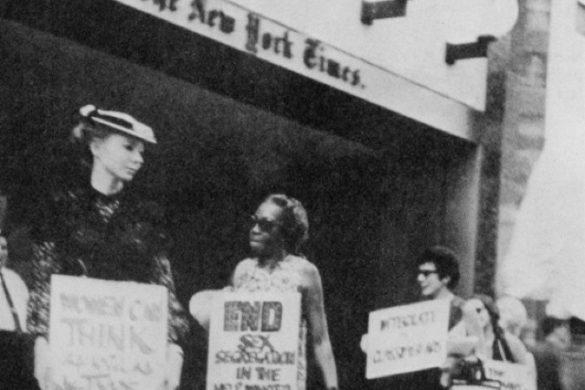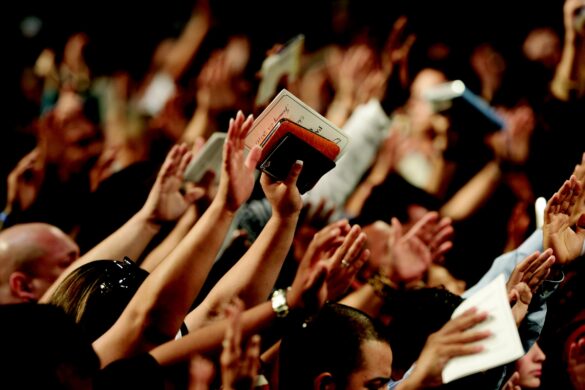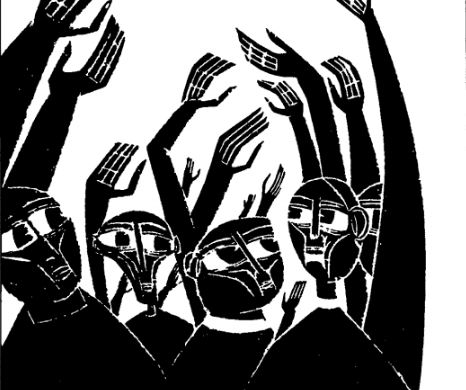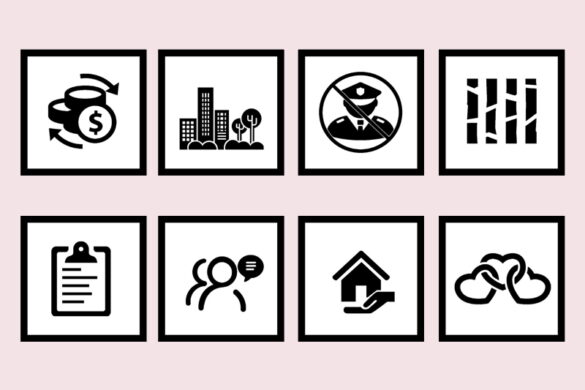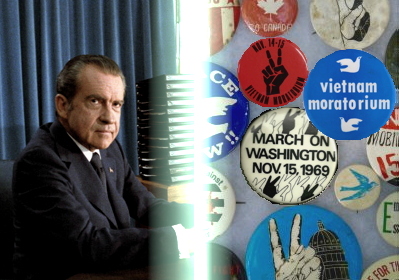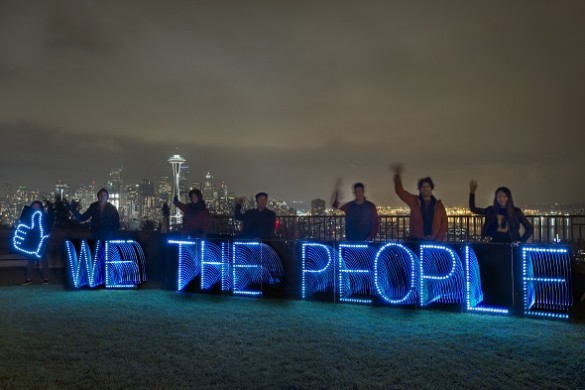Understanding the warring factions within the Democratic and Republican Party coalitions is critical for progressives who want to build power.
By Mark and Paul Engler
(Published by In These Times)
In his 1963 book The Deadlock of Democracy, political historian James MacGregor Burns offered a novel suggestion. Then as now, most academics agreed that America’s party system was an unusually stable one. Ever since the Civil War era, when the election of Abraham Lincoln helped to consolidate the dominance of two major political parties, Republicans and Democrats had ruled with relatively little outside contestation. But Burns saw things differently. America did not have two political parties, he argued, but four.
In Burns’s formulation, each of the major parties was split into two branches — a “congressional wing” and a “presidential wing” — and there could be significant tensions between the two. Today, the specific division that Burns highlighted has been largely forgotten by history. But his approach of surveying American politics by dividing it up into factions more nuanced than “Democrat” and “Republican” has been much more resilient. For example, in 2021, author and journalist George Packer published a book arguing that the nation’s politics are not driven by division between two groups — liberals and conservatives — but rather by conflict between four tribes: a libertarian “Free America,” a nationalistic “Real America,” a technocratic “Smart America,” and a progressive-minded “Just America.”
In creating such a classification, Packer stands in a crowded field. Since Burns’s time, a plethora of columnists and commentators have followed in the historian’s footsteps, dividing the electorate into rival blocs and asking the provocative question: What if America did not have two political parties, but three? Or four? Or six? What if this were not a hypothetical scenario, but rather a reflection of our current reality?
Whether we like it or not, America’s established two-party order shows little sign of being replaced in the near future. But it can still be valuable to examine how the voting blocs that exist in U.S. politics might align if we were in, say, Germany, Spain or New Zealand. Instead of simply classifying voters as Democrats or Republicans and treating the identity of these parties as static, we can examine the shifting factions that have contentiously vied for control within each party. This way of looking at political factions is more than an interesting thought experiment. For organizers, it can allow for better strategic decision-making, yielding new insights into influencing other groups, building coalitions — and winning real power.
* * * * *
Breaking down multi-party America
Of the many efforts to divide the American body politic into groupings that — in another context — might be cohesive enough to function as independent political parties, perhaps the most long-standing has been that of the Pew Research Center. Since 1987, Pew has gathered survey data and released a report approximately every five years that seeks to “look at internal divisions within both the Republican and Democratic coalitions.” The original report, written in the waning days of the Cold War, said that, “In 1987, the conventional labels of ‘liberal’ and ‘conservative’ are about as relevant as the words ‘Whig’ and ‘Federalist.’” The report argued that “these expressions have not only lost much of their traditional meaning, they do not even remotely come close to defining the nature of American public opinion.”
To more actively characterize the divisions among the U.S. public, Pew’s researchers identified nine “basic values and orientations” that served to motivate voters and divide people into groups. These were: religious faith, tolerance, social justice, militant anti-Communism, alienation (or the “belief that the American system does not work for oneself”), American exceptionalism, financial pressure, attitudes towards government, and attitudes towards corporations. Ask someone about these issues, the survey’s logic went, and you could find their true political tribe.
Over the years, the cleavages highlighted in Pew’s political typologies have shifted somewhat — fear of Soviet Communism, for example, has been supplanted by concerns about immigration as a driver of political behavior. But the overall approach of breaking the American public into subgroups based on their attitudes toward key issues has remained constant over eight reports spanning more than three decades. Others have also joined Pew in creating like-minded typologies — among the more detailed of which are from the right-leaning Virginia-based think tank Echelon Insights and progressive political scientist Lee Drutman.
So how do Republicans and Democrats break down?
With regard to those on the right wing of the political spectrum, the very first Pew report contended that “The Republican Party has two distinct groups: the Enterprisers, whose more traditional form of Republicanism is driven by free enterprise economic concerns, and the Moralists, an equally large, less affluent and more populist group driven by moral issues and Militant anti-communism.” Thirty-five years later, such a division may still be valid. At the same time, Drutman, a lecturer at Johns Hopkins University and a senior fellow at New America, has offered some updates for the current political climate. He believes that, if operating in a multi-party system, “Republicans would probably split into three: a center-right Reform Conservative Party (think Marco Rubio), a consistently conservative Christian Republican Party (think Cruz), and a populist-nationalist America First Party (think Trump).” He also allows that “Maybe a small Libertarian Party would win some seats.”
Pew’s recent surveys further draw out some of the fault lines. The most business-minded Republicans, which in 2017 Pew called “New Era Enterprisers,” demand aggressive tax cuts and deregulation, but they may be open to immigration and tolerant when it comes to same-sex marriage. They are relatively cosmopolitan and largely internationalist, supportive of government efforts to advance corporate-led globalization. These well-off conservatives stand in contrast with another group, dubbed the “Populist Right” in the 2021 survey, which is most likely to find its ranks based in rural areas. Its members are rabidly anti-immigrant, show significant resentment toward banks and corporate elites, and rail against “free trade” treaties. A third group, “Faith and Flag Conservatives” are older and overwhelmingly Christian. Diverging from the populists, they generally view the U.S. economic system as fair. Instead, they are driven by the culture war. Seeing themselves in an electoral battle against abortionists, homosexuals, and radical feminists, they have never met a “Don’t Say Gay” bill they didn’t like.
The fact that “New Era Enterprisers,” the “Populist Right,” and “Faith and Flag Conservatives” have been able to hold together within the Republican Party coalition is remarkable — and sometimes tenuous. The Tea Party’s challenges to incumbents they dubbed RINOs, or “Republican in name only,” illustrates that the coexistence has not always been peaceful. As for points of unity, Pew noted in 2021 that the factions are fairly aligned in beliefs about race: the groups consistently rebut the idea that white people benefit “from advantages in society that Black people don’t have” and largely contend that “increased public attention to the history of slavery and racism in America” is negative.
With regard to the political left, the Democratic coalition contains divisions of its own. When asked ahead of the 2020 presidential primaries about the prospect of former Vice President Joe Biden winning the Democratic Party nomination, Rep. Alexandria Ocasio-Cortez (D‑N.Y.) memorably groaned. “Oh God,” she remarked to New York magazine, “In any other country, Joe Biden and I would not be in the same party, but in America, we are.”
A variety of political analysts have backed Ocasio-Cortez’s sentiment. In a 2019 study—entitled “What if the U.S. Were a Multi-Party Democracy?” — Echelon Insights imagined the Democrats splitting into three distinct groups in a European-style party system, with its members divided between the “Acela,” “Green,” and “Labor” parties. The neoliberal “Acela Party” would be oriented toward business-aligned centrists. In the study’s words, it would aim to “Advance social progress including women’s rights and LGBTQ rights, work with other countries through free trade and diplomacy, cut the deficit, and reform capitalism with sensible regulation.”
Progressives on the left end of the Democratic coalition would hardly find this to be an attractive platform. Instead, Echelon predicted that they would join a “Green Party” led by Ocasio-Cortez and other members of The Squad. This party would seek to “pass a Green New Deal to build a carbon-free economy with jobs for all, break up big corporations, end systemic inequality, and promote social and economic justice.”
Between these two poles would fall most traditional Democrats. Echelon envisioned that a bloc of people possibly more than twice as large as each of the other groupings might join a European-style “Labor Party.” This party would “put the middle class first, pass universal health insurance, strengthen labor unions, and raise taxes on the wealthy to support programs for those less well off.”
Members of the hypothetical Acela, Labor, and Green parties might actually agree in their diagnosis of many problems, and yet disagree on the solutions. Pew argues that, within the Democratic coalition, intensity of belief is often more important than cleavages based around issues — with mainstream liberals being content with modest reforms and younger radicals believing that much more drastic change is needed. In a multi-party system, this dynamic might force these parties to work in coalition, even as they remain at odds about what specific actions the state should take.
* * * * *
The value of understanding factions
Not all attempts to think about the United States as having a multi-party system are driven by the same motives. While some political observers are merely launching “what if?” conversations, other advocates are pushing for America to fundamentally revise its election laws — an improbable goal given the strong incentive the two dominant parties have to maintain their near-monopolies.
So, if we accept that electoral structures are unlikely to significantly transform anytime soon, why is it useful to look at various efforts to think of America as a multi-party system?
First, it allows us to better understand what the Democratic and Republican parties actually are. Instead of seeing the two major parties as ideologically well-defined groups with stable sets of beliefs, we can view them as fractious coalitions.
Various legal structures, electoral rules and political norms have created a situation in the United States in which forming new parties is difficult. Those outsider parties that do form tend to have limited success. Therefore, competing groups often instead seek influence within the dominant parties, which end up being big-tent entities that try to keep many constituencies together under the same roof. Inside the tent, factions make uncomfortable truces in order to create majorities that can hand them a share of power.
While political conflict in Europe often is expressed in arguments between different parties, in the United States, we are just as likely to see tensions playing out as arguments within the major parties. The Democrats and Republicans contain subgroups that rise and fall over time, and with their ascent or decline, these factions change the demographics and ideologies of the parties. Winning power requires thinking about how your faction can become dominant. As organizer Alexandra Flores-Quilty put it in a recent report for Momentum, “Political parties are not monoliths. They are open terrains of conflict and struggle.”
At several key junctures in the past century — including during the New Deal, and the emergence of the religious right in the 1970s and 80s — what it has meant to be a Republican or Democrat has fundamentally altered. Attention to rising and falling factions allow for insight into how major realignments happen within mainstream politics.
Thinking about America in a multi-party context can be useful particularly for those on the political left. The landscape of political blocs illustrates how, even if the left had its own party that was more ideologically coherent than the Democrats, it would still have to deal with the problems of interacting with other factions.
Disgusted with both Democrats and Republicans, advocates of third parties often promote a fresh party infrastructure as a panacea. But the creation of a new party does not solve every political problem — it only introduces new sets of problems that then must be resolved. Because groups of people with different beliefs will not simply disappear, even those pursuing a third-party strategy must be attentive to fault lines within the electorate. They will need to consider which factions can be peeled off from the existing parties, and what narratives they might use to unite disparate groups. When the traditional parties try to win back their members by co-opting some of the third party’s issues and exploiting divisions in their ranks, they will need to find ways to respond.
Questions of coalitions also remain. A third party might have the advantage of a more disciplined and principled ideological identity, but purity only goes so far: European parties must constantly consider what groups they are willing to join in alliances with, and which they would never join. They must decide whether they might be willing to serve as a partner in a governing coalition led by others, or whether they want to stay on the outside. If they do opt to go inside, they must consider what gains it allows them to secure, and what it costs them in terms of principles and their political appeal. As a 2020 headline in the Irish Times observed, “Serving in coalition government can be bad for junior partner’s health.” On the other hand, being perpetually excluded from power altogether can lead a party to lose followers and to grow ever more insular and irrelevant.
These considerations do not pertain only to hypothetical party coalitions. Many observers have contended that, within the current Democratic Party coalition, progressives can be seen as a junior partner in just such a government. Those who would ultimately like to see this faction form its own party, as well as those seeking to make it a dominant force within a bigger Democratic tent, must deal with many of the same strategic questions.
In 2019, Waleed Shahid, a spokesperson for Justice Democrats, a group that backs progressive Democratic primary challenges, told Politico, “There is going to be a war within the party. We are going to lean into it.” Nearly a decade before, Tea Party advocates sought to reshape the Republican Party with “RINO hunts” that took down figures as prominent as former House Majority Leader Eric Cantor (R‑Va.). In each case, the insurgents in question might have more easily created new parties under a different political system. But in America, these factional battles have played out under the cover of what might look from the outside like a placid and stable two-party order.
In this respect, the type of thinking encouraged by James MacGregor Burns nearly 60 years ago has grown in importance not only for those who want to understand the rifts driving American politics — but also those who seek to make the most of the opportunities they present.
Research assistance provided by Celeste Pepitone-Nahas.




